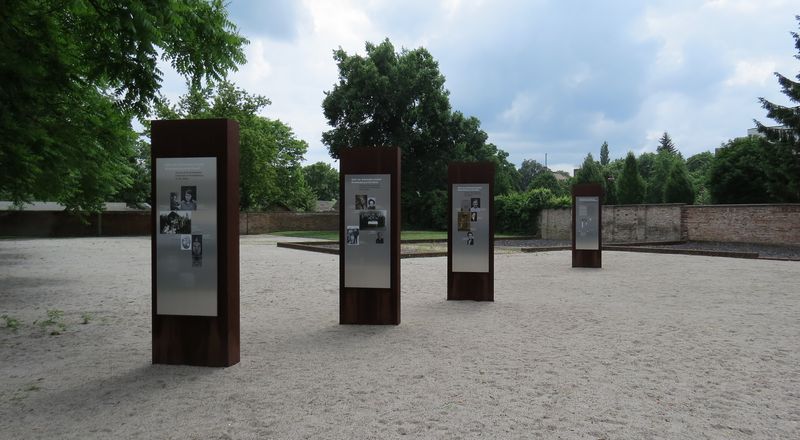since 2012 Memorial for the Victims of the Euthanasia Killings
Memorial at a historical location
The Brandenburg Memorials Foundation opened the Memorial to the Victims of the Euthanasia Killings in a former service building of the Old Prison in Brandenburg an der Havel in August 2012. The permanent exhibition, located in a 120-square-meter space on the historical site of the euthanasia murders and in the immediate vicinity of the former gas chamber, informs visitors about the preparations and implementation of the plan, including the people involved in the murders of more than 9,000 sick and disabled persons between January and October 1940.
Permanent exhibition
The exhibition focuses on the people murdered in the Brandenburg killing facility, as well as the historical context. Biographies of several of the murder victims have been recreated using photographs and documents from their families. Additional photographs of the victims are being shown in an outdoor exhibition near the site of the former gas chamber.
Archive, library and seminar rooms
The Brandenburg an der Havel Memorials, which are also responsible for the memorial to the history of the former Brandenburg-Görden Prison, uses rooms in the neighboring “Old Prison” buildings for its archive, library and educational services.
Commemoration after 1945
Brandenburg an der Havel was the last of the six Nazi euthanasia facilities in which a modern memorial was built. After the prison grounds sustained heavy bombing damage at the end of the war in 1945, a majority of the buildings were torn down or built over. Nevertheless, in the period immediately after the war, the euthanasia murders were still tangible in the walls of the “Old Prison,” as is documented by early commemoration events. The preserved buildings, such as the former poorhouse, were used by the city administration beginning in 1949.
Open-air exhibition
A memorial plaque was erected on the exterior wall of the former prison in 1962. Dr. Folkert Schröder performed research, on his own initiative, on the T4 killings beginning in the 1980s, and he created the first exhibition. This exhibition was shown after the building footprints were rendered visible and the gas chamber site had been determined in the mid-1990s. An outdoor exhibition followed in 1997 and consisted of seven pillars with text and images.





